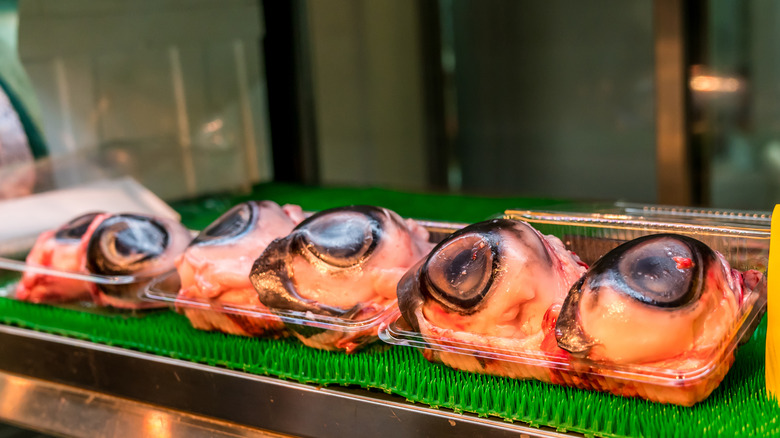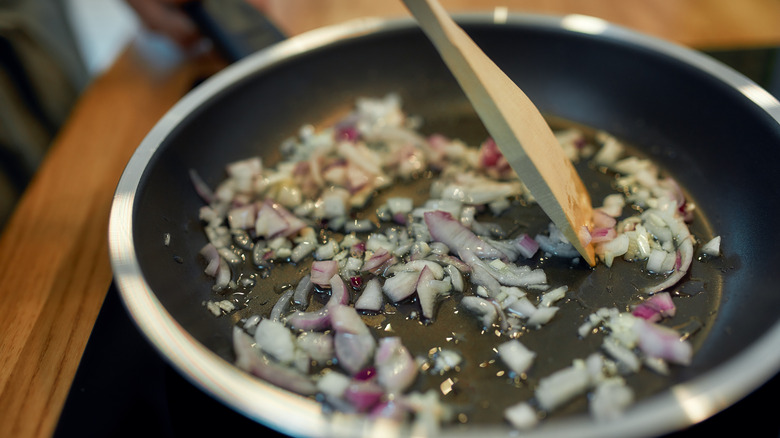How Tuna Eyeballs Are Traditionally Prepared In Japan
"Weird" culinary delicacies can be found all over the world, and many of them are not for the faint of heart. Dishes typically consist of insects and animal body parts that give the television series "Fear Factor" a run for its money.
Travel Food Atlas highlights some of these foreign local favorites, such as crocodile skewers in Australia and frogs' legs in France. For the brave and daring, head to Colombia for fried or roasted fat-bottomed ants, China for snake soup, and Italy for casu marzu, which is overrun with maggots.
Japan, known for sushi, ramen, and fresh yuzu fruits, also crafts unique delicacies that may seem strange to tourists. There's horse meat sashimi (basashi), soup with beef innards (motsunabe), and even raw chicken sashimi, per Tokyo Treat. And if you need a shot to get through these meals, try the "tuna's tears," which combines soju with fluid from tuna eyeballs, via CNN Travel. These eyeballs are common in izakayas and are often eaten as appetizers, according to Atlas Obscura. Here's how they're traditionally prepared in Japan.
Braised or sautéed
Let's start with the anatomy of a tuna eyeball first. Atlas Obscura states that the lens, iris, and inner fluids are surrounded by the sclera — the latter of which is not usually eaten because of its firm and chewy texture. But everything else inside is likened to bone marrow, which becomes soft and tender upon cooking. Braising in soy sauce and mirin or sautéing with ginger and sesame oil are usually the go-to cooking methods for tuna eyeballs, which are then served alongside ginger, rice vinegar, soy sauce, and lemon slices, per Mapotic.
Tuna eyeballs also contain a plethora of health benefits, according to Know Insiders. Some of these include lowered cholesterol levels thanks to their B vitamins and Omega-3 fatty acid content.
So if you're ever in Japan in the future, make a beeline for sushi and ramen shops to give tuna eyeballs a try. Luckily, you'll only see one or two of these on a plate, but you can certainly order more if you enjoy this local delicacy.

